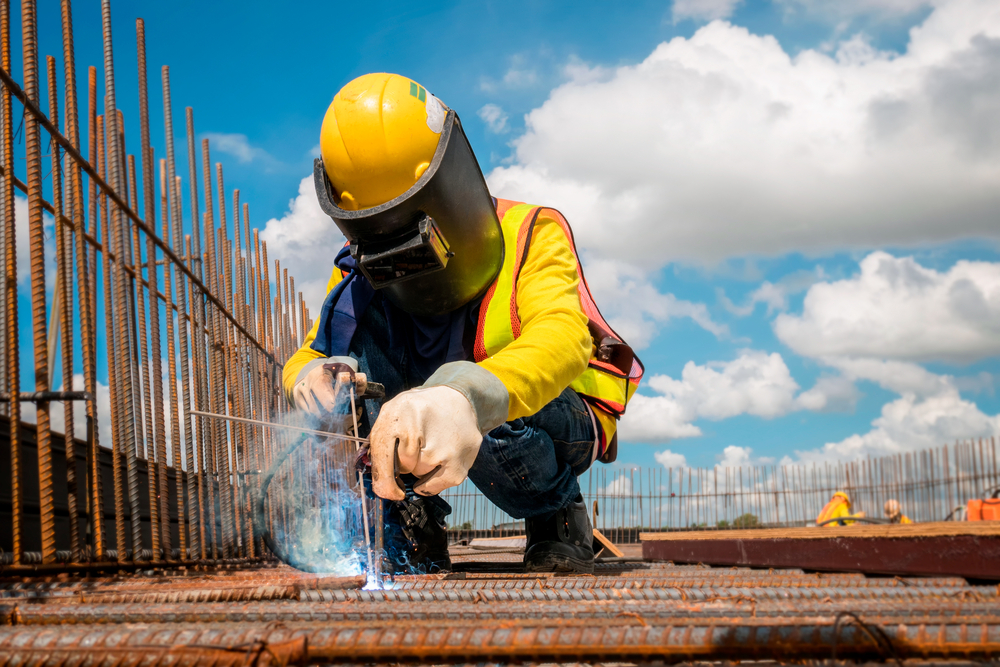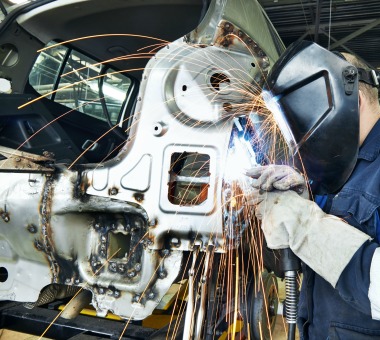All About Welding: Secret Insights Into Techniques and Best Practices for Success
Welding includes a variety of techniques, each suited for particular materials and applications. Understanding these methods, such as GMAW, SMAW, and TIG, is crucial for achieving ideal results. Additionally, the appropriate devices and security practices can not be forgotten. As prep work and fixing play important functions in the welding procedure, mastering these components can considerably enhance the quality of the final product. What are the vital variables that assure a successful weld?
Comprehending Different Welding Strategies
Welding strategies incorporate a selection of methods, each matched to details applications and products. Amongst the most common strategies are Gas Steel Arc Welding (GMAW), Secured Steel Arc Welding (SMAW), and Tungsten Inert Gas Welding (TIG) GMAW, also known as MIG welding, is popular for its rate and adaptability, making it excellent for slim materials. SMAW, or stick welding, is favored for its simplicity and effectiveness in outdoor environments, specifically with thicker metals. TIG welding provides accuracy and control, making it ideal for elaborate job and non-ferrous metals (Montana Mobile Welding and Repair Belgrade Fabrication). Each method has its unique benefits and factors to consider, enabling welders to pick the ideal technique based upon the task's needs, product type, and desired results. Comprehending these strategies is necessary for successful welding
Important Welding Tools and Tools
While different welding techniques need particular skills, the ideal equipment and devices are similarly vital for attaining high quality outcomes. Important welding tools consists of welding equipments, which vary depending upon the method-- such as MIG, TIG, or stick welding. Protective equipment, including aprons, handwear covers, and headgears, assurances safety and convenience during the process. Furthermore, clamps and components assist safeguard materials in place, guaranteeing precision in welds. Consumables like welding poles, wire, and protecting gas are also critical parts that influence the top quality of the weld. Devices such as grinders and cutters assist in surface prep work and post-weld ending up, adding to a specialist end result. Investing in high-grade equipment inevitably boosts the performance and effectiveness of welding jobs.
Security Practices in Welding
Correct safety and security techniques are vital in the welding market to safeguard employees from possible hazards. Welders must put on appropriate personal safety tools (PPE), consisting of safety helmets with proper shading, gloves, and flame-resistant clothes. Adequate ventilation is essential to minimize direct exposure to unsafe fumes and gases produced during the welding procedure. Additionally, employees must be educated in the appropriate handling of welding equipment to avoid mishaps. Fire precaution, such as maintaining combustible materials far from the welding location and having fire extinguishers conveniently available, are essential. Routine inspections of tools and work areas can help recognize prospective dangers prior to they lead to accidents. By sticking to these safety and security practices, welders can create a safer working setting and decrease risks related to their profession.
Preparing Products for Welding
Preparing materials for welding is a vital action that substantially influences the top quality and integrity of the last product (Montana Mobile Welding and Repair Belgrade Fabrication). Proper prep work includes cleaning the surfaces to remove pollutants such as corrosion, oil, and dust, which can compromise the weld. Strategies such as grinding, sanding, or making use of solvents are commonly utilized to attain a clean surface. Furthermore, making certain that the materials fit with each other well is vital; spaces can bring about weak welds. It's likewise vital to take right into account the placement and positioning of the elements, as this will affect the convenience of welding and the final outcome. Lastly, choosing the appropriate filler product and making sure compatibility with the base steels is necessary for achieving solid, long lasting welds
Tips for Achieving High-Quality Welds
Accomplishing high-grade welds needs focus to detail and adherence to ideal practices throughout the welding process. Proper joint preparation is crucial, guaranteeing surfaces are complimentary and tidy from contaminants. Picking the suitable filler material and welding strategy based on the base steels is crucial for excellent bonding. Maintaining constant traveling speed and angle while welding can promote and protect against defects uniformity. In addition, managing heat input is necessary; too much warmth can cause bending and weakened joints. On a regular basis inspecting the welds throughout the procedure permits for immediate adjustments if essential. Ultimately, using appropriate post-weld therapies, such as cleansing and stress and anxiety alleviation, can boost the sturdiness and honesty of the weld, ultimately ensuring a successful outcome.
Repairing Usual Welding Issues
Welding frequently offers difficulties that can influence the quality and stability of the final item. Usual issues such as porosity, irregular weld grains, and overheating can develop, each requiring certain troubleshooting strategies. view it Comprehending these troubles is essential for welders to enhance their abilities and achieve optimal outcomes.
Porosity Troubles Described
Porosity can often be forgotten, it stays a vital issue in welding that can jeopardize the integrity of an ended up item. Porosity refers to the visibility of tiny gas pockets within the weld grain, which can lead and weaken the joint to early failing. This problem generally occurs from impurities, wetness, or incorrect securing gas insurance coverage throughout the welding process. To alleviate porosity, welders must verify that the base products are tidy and dry, make use of suitable securing gases, and preserve regular welding criteria. Regularly examining the tools and environment can likewise assist determine possible concerns before they show up in the weld. Addressing porosity successfully is crucial for achieving solid, resilient welds that fulfill high quality criteria.

Inconsistent Weld Beads
Inconsistent weld grains can substantially affect the high quality and toughness of a finished item. Numerous factors add to this concern, consisting of incorrect travel speed, inaccurate amperage setups, and irregular electrode angles. When the welder moves too promptly, a grain may show up narrow and do not have infiltration, while moving also slowly can create extreme accumulation. Furthermore, utilizing the wrong amperage can result in either undercutting or extreme spatter, both of which concession weld honesty. The welder's method, such as inconsistent lantern activity, can also bring about uneven grain appearance. To reduce these problems, welders need to concentrate on keeping consistent, regulated movements and guaranteeing correct devices setups to achieve uniformity in their welds. Uniformity is vital to achieving dependable and solid welds.
Overheating and Warping Issues
Too much heat during the welding process can cause substantial overheating and contorting concerns, impacting the architectural honesty of the workpiece. These problems frequently manifest as distortion, which can compromise placement and fit-up, making further setting up challenging. Elements adding to overheating include the option of welding specifications, such as voltage and take a trip speed, along with the kind of material being welded. To alleviate these problems, welders need to maintain regular traveling rate and appropriate warm input while keeping track of the work surface temperature level. Furthermore, preheating or post-weld warm therapy can aid reduce tensions created by fast air conditioning - Belgrade. Normal assessment and adherence to finest methods are necessary in stopping getting too hot click to read more and making sure the longevity and dependability of welded frameworks
Often Asked Questions
What Are the Job Opportunities in the Welding Sector?
The welding market uses varied profession opportunities, including positions as welders, examiners, designers, and educators. Professionals can function in production, building, aerospace, and automobile sectors, profiting from strong need and competitive incomes in numerous roles.
How Can I Boost My Welding Rate Without Giving Up Quality?
To boost welding rate without sacrificing quality, one must exercise efficient strategies, preserve tools, enhance setups, and enhance hand-eye control. Routine training and looking for responses can additionally considerably add to accomplishing much faster, top notch welds.
What Certifications Are Offered for Welders?
Various certifications exist for welders, consisting of those from the American Welding Culture (AWS), the National Center for Construction Education And Learning and Research Study (NCCER), and numerous industry-specific companies. These qualifications enhance employability and show ability proficiency.
Just How Does Welding Impact the Features of Metals?
Welding affects the residential or commercial properties of metals by altering their microstructure, which can cause modifications in firmness, ductility, and toughness. Heat input and air conditioning rates during the procedure greatly affect these product characteristics.
Can I Weld Dissimilar Metals With Each Other?
